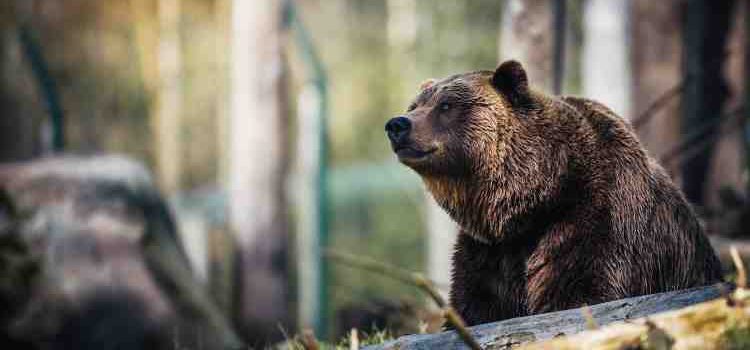Welcome to the world of nature and wildlife photography in the Okanagan! As a photographer myself, I know that capturing the beauty of the natural world can be both challenging and rewarding.
The Okanagan region of British Columbia offers a wide variety of landscapes and wildlife to photograph, from the rugged peaks of the Monashee Mountains to the serene lakes and vineyards of the valley.
Today, I will introduce you to some of the best locations for nature and wildlife photography in the Okanagan and provide tips on how to make the most of your time in the field.
Table of Contents
- Overview of the Okanagan Region
- Best Locations for Nature Photography
- Monashee Mountains
- Okanagan Lake
- Best Locations for Wildlife Photography
- Osoyoos Desert
- Okanagan Grasslands
- Tips for Successful Photography
- Planning and Preparation
- Camera Settings
- Composition and Lighting
- Conclusion
Overview of the Okanagan Region:
The Okanagan region of British Columbia is located in the southern interior of the province and is known for its warm and dry climate, as well as its diverse landscapes and wildlife.
The region is home to several mountain ranges, including the Monashees and the Okanagan Highlands, as well as several lakes, including Okanagan Lake and Skaha Lake. The region is also known for its vineyards and orchards, which provide a colorful contrast to the rugged landscapes.
Best Locations for Nature Photography
The Okanagan is known for its fauna, lakes, mountains, and other aspects making up its nature experience. Below are a few locations for landscape photography:
Monashee Mountains
The Monashee Mountains offer some of the most breathtaking landscapes in the Okanagan. The rugged peaks, alpine meadows, and glistening glaciers provide a variety of subjects for nature photographers. Some of the best places to photograph the Monashees are from the summit of Baldy Mountain, the shores of Monashee Lake, and the trails of the Monashee Provincial Park.
Okanagan Lake:
Okanagan Lake is another great location for nature photography. The lake offers a wide variety of subjects, from the rugged cliffs of the north end to the serene beaches of the south end. Photographers can also capture the reflections of the surrounding mountains in the lake’s calm waters.
Some of the best places to photograph Okanagan Lake are from the shores of Peachland, the trails of the Myra-Bellevue Provincial Park, and the waters of the Okanagan Lake Ferry.
Best Locations for Wildlife Photography:
When it comes to wildlife photography, there are a few options to consider. Below we share some recommendations:
Osoyoos Desert
The Osoyoos Desert is a unique and fragile ecosystem located in the southern Okanagan. It is home to a wide variety of wildlife, including the badger, rattlesnake, and horned lizard. Photographers can also capture the unique plants and cacti that are found in this desert landscape.
The best time to photograph the Osoyoos Desert is in the early morning or late afternoon when the light is soft and the temperatures are cooler.
Okanagan Grasslands
The Okanagan Grasslands are located in the central Okanagan and are home to a wide variety of wildlife, including the mule deer, bighorn sheep, and coyote.
The grasslands offer a diverse landscape with rolling hills, wetlands, and sagebrush. Photographers can also capture the colorful wildflowers that are found in this area. The best time to photograph the Okanagan Grasslands is in the early morning or late evening when the light is soft and the wildlife is most active.
Tips for Successful Photography:
We summarized a few tips to help you with your photography journey across the Okanagan region.
Planning and Preparation
Before heading out into the field, it’s important to plan and prepare for your photography session. Research the best times of day to photograph in the locations you plan to visit, as well as the type of wildlife and landscapes that can be found there. Make sure to pack all necessary gear, such as extra batteries and memory cards, and check the weather forecast to ensure that you’re prepared for any conditions.
Camera Settings
To capture the best images, it’s important to understand your camera settings and how to use them effectively. For nature and wildlife photography, a fast shutter speed and a wide aperture are essential for freezing motion and creating a shallow depth of field. It’s also ideal to understand ISO, white balance, and focus modes to ensure that your images are properly exposed and focused.
Composition and Lighting
Composition and lighting are key elements in creating successful nature and wildlife photographs. Look for interesting angles and perspectives, and use natural elements such as lines and patterns to lead the viewer’s eye through the image. Pay attention to the lighting conditions, and try to use the light to enhance the mood and atmosphere of the scene.
Conclusion
Nature and wildlife photography in the Okanagan offers a wide variety of subjects and landscapes to capture. From the rugged peaks of the Monashees to the serene lakes and vineyards of the valley, there is something for every photographer to enjoy.
By planning and preparing, understanding camera settings, and paying attention to composition and lighting, you can make the most of your time in the field and create beautiful, evocative images of the natural world.

